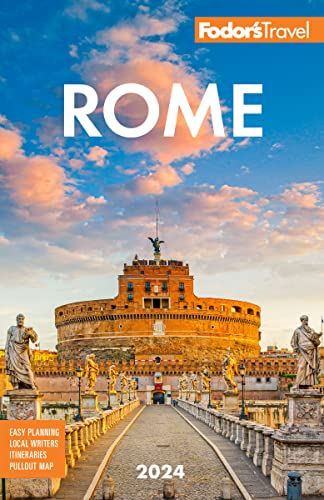Climbing the steps to St. Peter's Basilica feels monumental, like a journey that has reached its climactic end. Suddenly, all is cool and dark…and you are dwarfed by the gargantuan nave and its magnificence. Above is a ceiling so high it must lead to heaven itself. Great, shining marble figures of saints frozen mid-whirl loom from niches and corners. And at the end, a throne for an unseen king whose greatness, it is implied, must mirror the greatness of his palace. For this basilica is a palace, the dazzling center of power for a king and a place of supplication for his subjects. Whether his kingdom is earthly or otherwise may lie in the eye of the beholder.
For good Catholics and sinners alike, the Vatican is an exercise in spirituality, requiring patience but delivering joy. Some come here for a transcendent glimpse of a heavenly Michelangelo fresco; others come in search of a direct connection with the divine. But what all visitors share, for a few hours, is an awe-inspiring landscape that offers a famous sight for every taste: rooms decorated by Raphael, antique sculptures like the Apollo Belvedere, famous paintings by Giotto and Bellini, and, perhaps most of all, the Sistine Chapel—for the lover of beauty, few places are as historically important as this epitome of faith and grandeur.
The story of this area’s importance dates back to the 1st century, when St. Peter, the first Roman Catholic pope, was buried here. The first basilica in his honor rose on this spot some 250 years later under Emperor Constantine, who legitimized Christianity. It wasn’t until the early 15th century, however, that the papacy decided to make this area not only a major spiritual center but the spot from which they would wield temporal power as well. Today, it’s difficult not to be reminded of that worldly power when you take in the massive Renaissance walls surrounding Vatican City—the international boundary of an independent sovereign state, established by the Lateran Treaty of 1929 between the Holy See and Mussolini’s government.
Legally recognized as its own city-state, Vatican City covers 110 acres on a hill west of the Tiber and is separated from the city on all sides, except at Piazza di San Pietro, by high walls. Within the walls, about 840 people are permanent residents. The Vatican has its own daily newspaper (L'Osservatore Romano), issues its own stamps, mints its own coins, and has its own postal system (run by the Swiss). Within its territory are administrative and foreign offices, a pharmacy, banks, an astronomical observatory, a print shop, a mosaic school and art restoration institute, a tiny train station, a supermarket, a small department store, and several gas stations. The sovereign of the world's smallest state is the pope, Francis, elected in 2013 after his predecessor, Benedict XVI, stepped down (the first time a pope has "resigned" from office since 1415). His main role is as spiritual leader to the world's Catholic community.
Today, there are two principal reasons for sightseeing at the Vatican. One is to visit the Basilica di San Pietro, the most overwhelming architectural achievement of the Renaissance; the other is to visit the Musei Vaticani, which contain collections of staggering richness and diversity, from ancient Etruscan treasures and Egyptian mummies and an actual piece of the Moon.
Inside the basilica—breathtaking both for its sheer size and for its extravagant interior—are artistic masterpieces including Michelangelo's Pietà and Bernini's great bronze baldacchino (canopy) over the main altar. The Musei Vaticani, their entrance a 10-minute walk from the piazza, hold endless collections of many of the greatest works of Western art. The Laocoön, Leonardo's St. Jerome in the Wilderness, and Raphael's Transfiguration are all here. The Sistine Chapel, accessible only through these museums, is Michelangelo's magnificent artistic legacy, and his ceiling is the High Renaissance in excelsis in more ways than one.






